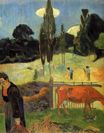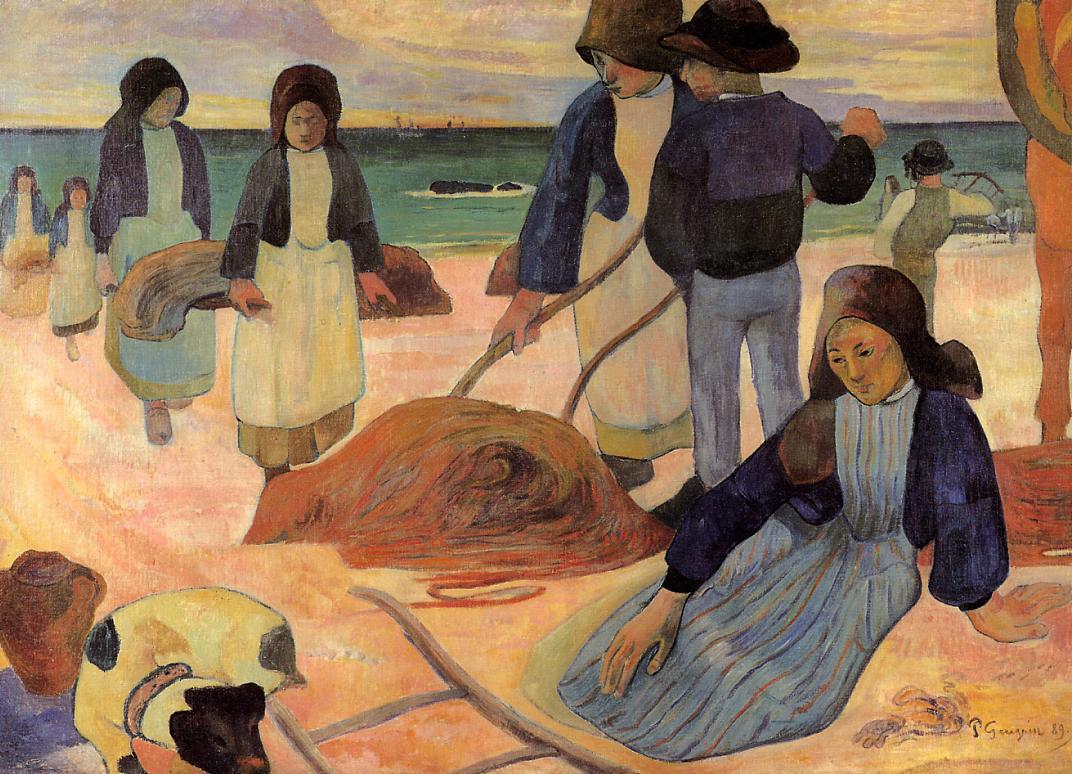Paul Gauguin - The Kelp Gatherers 1889
 |
 |
 |
 |
 |
 |
 |

The Kelp Gatherers 1889
123x87cm oil/canvas
Folkwang Museum, Essen, Gernany
The image is only being used for informational and educational purposes
<< Previous G a l l e r y Next >>
From Folkwang Museum, Essen:
When Paul Gauguin taught himself painting in 1874, he had already had a quite varied life. Born in Paris and raised in Peru, he first worked as sailor and businessman. As a broker for a Paris bank (until 1883) Gauguin finally achieved respect and wealth. Invited by Camille Pissarro and Edgar Degas, Gauguin first participated in an Impressionist exhibition in 1880. He then quit his job, living at first in Rouen and Copenhagen before returning to Paris for a short time. From there he left in 1886 to live in Pont-Aven, to which he returned after a visit to Martinique in 1888. The painting of Breton kelp gatherers was made at a time when he had left the agitation of the Breton artists' colony in Pont-Avon for the village of Le Pouldu. The decorative force of the lines, which clearly and firmly encircle the clear surfaces, produce a monumentality new for Gauguin. Even the simplest daily activities gain a quiet dignity from his hand. With such works he freed himself from the Impressionists’ 'analytical' conception, moving towards a new synthesis that would give his compositions strength and clarity. In Brittany, Gauguin was looking for the origins of a simple, indeed primitive life tied to the rhythms of nature. Also inspired by Breton popular art, he simplified the forms of his depictions and emphasized their two-dimensional, almost decorative effect, something which also characterized 'The Kelp Gatherers'.